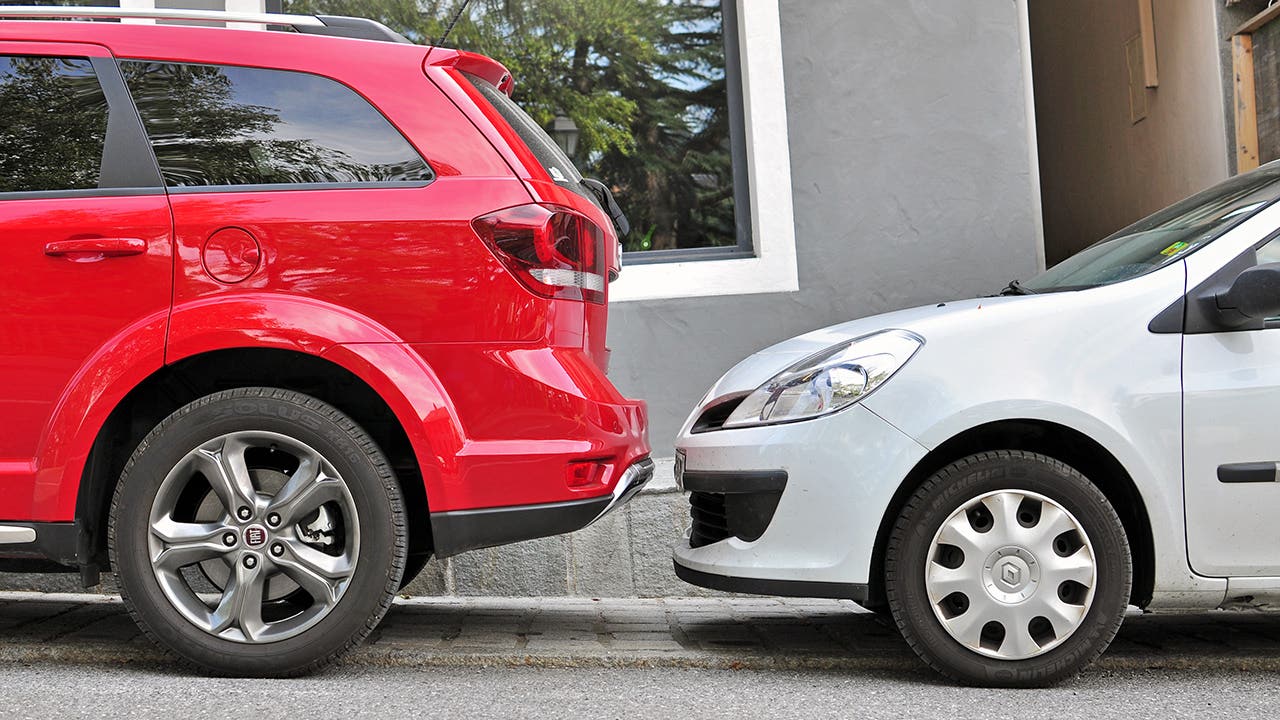How to add a car to your insurance policy

The Bankrate promise
At Bankrate, we strive to help you make smarter financial decisions. To help readers understand how insurance affects their finances, we have licensed insurance professionals on staff who have spent a combined 47 years in the auto, home and life insurance industries. While we adhere to strict , this post may contain references to products from our partners. Here's an explanation of . Our content is backed by Coverage.com, LLC, a licensed entity (NPN: 19966249). For more information, please see our .
Key takeaways
- Many providers offer significant discounts for adding a vehicle to an existing car insurance policy, as opposed to having separate policies for each vehicle.
- To add a car to your insurance policy, you’ll likely need to provide your insurance carrier with the VIN of the new vehicle, registered owner’s information, vehicle safety features, type of coverage you want, usage estimates and leasing information if applicable.
- It may make more sense to have separate policies if you need different types and amounts of coverage for your vehicles.
You may need to add a car to your insurance policy for various reasons, such as when your teenager hits the road for the first time with their freshly legal driver’s license or when you purchase a sweet new ride for weekend cruising. Adding a new vehicle to an existing policy typically offers cost savings and simplicity compared to maintaining separate policies. However, this approach may not be optimal for everyone. To aid in your decision-making process, Bankrate’s insurance editorial team has analyzed the advantages and disadvantages of both multi-car and separate policies. Additionally, we provide guidance on how to effectively communicate to your insurance provider that you’ll be adding a car to your policy to ensure timely activation of your coverage and to determine your eligibility for any available discounts.
How do I add a car to my insurance policy?
You can add a car to your existing insurance policy in two ways: by contacting your agent or insurance company or by adding it yourself through your company’s online portal or mobile app (if your company has these electronic options).
If you prefer your agent or company to add the vehicle for you, you may be able to give them a call or stop into the office with your vehicle information and tell them the changes you’d like to make to your policy.
If you’d like to add the vehicle yourself online, log into your policy via your company’s online portal or mobile app and follow the steps provided. However, note that not all companies have online policy management capabilities. If your company doesn’t give you the option to make changes to your policy online, you will need to contact them directly to ask how to add the vehicle to your insurance.
Whether you have your agent add your car to the policy or if you do it yourself, most insurance companies will provide you with proof of insurance shortly after the transaction, typically by emailing you an ID card.
What information do I need to add a car?
There is some basic information that you’ll need to give your insurance company to add a car to your policy, including:
- Vehicle identification number (VIN): You can find your VIN on the vehicle’s title or window sticker. If these aren’t available, look for it in the lower left-hand corner of your windshield or on the inside of your door.
- Registered owner’s information: If you register the vehicle in anyone’s name other than your own, you will likely need to add that driver to your policy, too.
- Vehicle safety features: Most of the time, your vehicle’s safety features will populate based on your VIN. Occasionally, however, your agent may ask you for detailed information about any anti-theft devices in your vehicle, which may lead to additional discount opportunities.
- Type of coverage: You will need to tell your insurance company what types and levels of coverage you’d like your new vehicle to carry.
- Usage information: Your insurance company will ask you how you plan on driving your vehicle. For instance, they may want to know if you are commuting and how many miles round trip it takes you to get to work. They may also ask for your current odometer reading. Some insurers offer discounts for low-mileage drivers, which might save you money if you work from home, use public transportation or are retired.
- Lienholder or leasing company information: If you are financing or leasing your car, your insurance company will need your lender’s information to send them proof that your vehicle is covered.
Why should I add another car to my insurance policy?
Because most insurance companies offer a hefty multi-car discount, multi-car insurance policies are usually cheaper than insuring multiple vehicles on separate policies. There are times, however, when you might be unable to add another car to your policy. This is likely the case if you own more vehicles than the average person, as most companies have a limit to how many cars you can list on one policy. However, this limit generally varies by company.
Although you may qualify to get a multi-car discount for adding a vehicle to your existing policy, it’s important to consider the pros and cons when comparing multi-car and single-car policies. There are times when separate policies may work better, such as when you would like to spread your policy payments out over the month or when you’d like different coverage levels for each car.
| Pros | Cons | |
|---|---|---|
| Multi-car policy | The more cars you add, the more you may save through multi-car discounts Easier to manage all in one place Pay one bill covering all vehicles on the policy |
The premium for all your vehicles will be due at the same time You normally have to carry the same liability limits for all vehicles listed on the same policy |
| Separate policies | You can offset payment dates You can select different coverage for each vehicle |
May be more expensive to insure each vehicle separately You will need to manage separate bills and due dates |
Some insurance companies may not give you an option when it comes to insuring your vehicles on one policy or separate ones. If you are unsure of how to cover your additional vehicle, call your company or agent to discuss your options.
Does adding a car to my policy affect my rate?
Although you may qualify for a multi-car discount by adding a second vehicle to your policy, your overall car insurance rate will likely still increase. Multi-car discounts are among some of the most significant discounts offered to drivers by car insurance companies, but they’re typically not enough to negate the total premium your insurance company will charge to add a vehicle to your policy.
To ensure you get the best rate possible, most insurance professionals recommend that you shop around and compare quotes after certain life events, like buying a new car.
How to choose coverage types and limits when adding a car
The average cost of car insurance in the United States is $741 per year for minimum coverage and $2,545 per year for full coverage. Minimum coverage may be cheaper, but purchasing higher limits and full coverage has its benefits.
Minimum coverage is just what it sounds like, the minimum insurance required by your state to drive legally. Many insurance experts, however, would recommend that you purchase more than the minimum. Higher liability levels, for example, will give you fuller protection in an expensive accident if you are determined to be at fault. It’s also important to note that you’ll usually be required to have a consistent amount of liability coverage across your multi-car policy, meaning you can’t customize the limit for each vehicle.
It’s also worth considering optional coverages such as collision and comprehensive insurance, which cover damage to your own car. Liability doesn’t do that in an at-fault accident. Generally, you can customize these coverages as you see fit for each vehicle within a multi-car policy. For example, you may opt to purchase collision and comprehensive coverage for your personal car but not for the old starter car you bought for your teenager. Other optional insurance types include gap insurance, emergency road service and rental reimbursement. That said, it’s best to talk with a licensed insurance agent about what coverages are worth the cost in your situation.
Frequently asked questions
-
-
Auto-Owners, USAA and Geico currently offer some of the cheapest car insurance policies on the market. However, prices are always fluctuating. So, it’s important to routinely ask for quotes from multiple providers to ensure you have the most affordable coverage possible. You especially want to do this if anything has recently changed about your driving profile, such as moving to a different ZIP code, purchasing a different vehicle or cleaning up your driving record. All car insurance companies use their own proprietary algorithm for reviewing your driving profile to customize your quote, so they may be able to offer you a cheaper rate under your new circumstances. Quotes are free, and most insurers offer them if you answer a few questions on their website. Based on the prices you receive, you can choose the one that is best for your budget.
-
The average rate for car insurance varies from state to state. Keep in mind, however, that your own policy costs are likely to be different from the averages. Multiple factors, such as your car’s make and model, your location and even your age and gender in some states, can impact your rate. One of the most important factors is your driving ability. Drivers with no marks on their motor vehicle record tend to be given preferential rates when they apply for coverage.
-
Most states require you to have insurance in place before you can register your new vehicle. If you are financing or leasing your vehicle, you may also be required to show proof of insurance before driving your car off the dealership lot. Luckily, most insurance companies can add a new vehicle to your policy the same day you purchase it. You can also opt to notify your current insurance company ahead of time that you plan on buying a car. By scheduling this in advance, otherwise known as making a future-dated endorsement, coverage for your new vehicle will automatically activate on the purchase date. If you somehow manage to forget to update your insurance information, some providers offer a grace period to drivers who purchase a new car. This is where the coverage on your existing car insurance policy may extend to your new vehicle, generally lasting seven to 30 days, depending on the provider.
-
Related Articles



